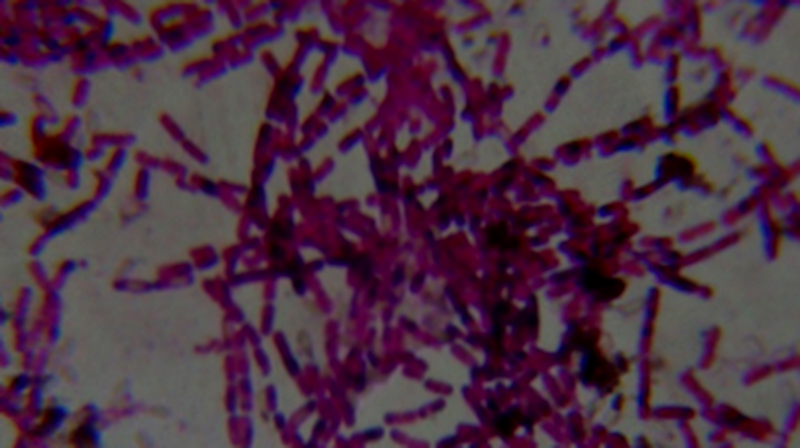
In a new study, scientists have gained new insights into the origins and functions of ‘riboswitches’ by constructing a complete, specific map of riboswitches in bacteria.
Riboswitches, as the name suggests, act like an on-off switch. They are regulatory segments of an mRNA molecule that bind small molecules, thereby regulating the synthesis of protein from the mRNA. Whenever a specific type of protein needs to be produced or reduced within a bacterial cell, the information is passed on from the DNA within the nucleus to the ribosomes within the cell with the help of messenger RNAs (mRNAs).
How do these riboswitches work? When the concentration of a certain molecule is low in the cell, it is unlikely to bind to the riboswitch. A riboswitch, in the unbound state (‘on’ state), allows for the biosynthesis of that particular molecule in the cell. Similarly, when the concentration of a certain molecule is high in the cell, it is likely to bind to the riboswitch. As a result, a riboswitch in the bound state (off state), suppresses the further increase in the concentration of the molecule in the cell.
In this study, Dr. Supratim Sengupta and Sumit Mukherjee from at the Department of Physical Sciences at the Indian Institute of Science Education and Research (IISER), Kolkata and Dr. Danny Barash from the Ben-Gurion University of the Negev, Israel, have scanned 2785 sequenced bacterial genomes across different bacterial phyla to search for lysine riboswitches. Their study was published in the peer-reviewed scientific journal PLOS ONE.
“Till date, nearly 40 classes of riboswitches have been discovered where the small molecule that binds to the riboswitch distinguishes each class,” explains Dr. Sengupta. Some of these small molecules include lysine, glycine, adenine, guanine, cobalamin, and so on. Riboswitches are found in thousands of bacterial species. However, not all classes of riboswitches are present in all bacteria.
The study focused on identifying lysine riboswitches. Dr. Sengupta, along with his other colleagues, have already published other studies focusing on other molecules such as adenine and guanine.
Identifying all lysine riboswitches in bacteria and constructing a gene-specific map of such riboswitches can be useful in several ways. “Just as a geographical map allows us to locate important landmarks, detect architectural similarities and differences, a gene-specific map allows us to locate riboswitches accurately, ascertain the genes they regulate, and find patterns in their distribution across species”, says Dr. Sengupta.
The researchers of this study have also developed an accurate, quick and inexpensive method to detect riboswitches in a cell computationally. “Each class of riboswitches is characterized by certain sequence motifs that are unique to that class. Just as the patterns of lines in a bar code uniquely identifies a product, the sequence motifs in a riboswitch can be used to uniquely associate it with a specific riboswitch class,” describes Dr. Sengupta.
Through their unique methodology, the team detected 468 lysine riboswitches. Additionally, they aimed to construct a complete gene-specific map of lysine riboswitches which can help researchers obtain insights into the evolutionary origin of each gene-specific lysine riboswitch.
To do this, ‘phylogenetic trees’ were created. “Just as a family tree shows the relationship between different members of an extended family and the common ancestor they can be traced back to, phylogenetic trees provide information about the evolutionary relationship between different species” explains Dr. Sengupta, “We constructed accurate phylogenetic trees of different bacterial groups and mapped the gene-specific lysine riboswitch distribution onto each phylogenetic tree”, he adds.
Using the phylogenetic trees, the researchers were able to draw conclusions about the point of origin of these lysine riboswitches i.e. how far back in the past these riboswitches first appeared. In a few cases, they also found evidence that the lysine riboswitches were transferred from distantly related bacterial species. “This process of transfer of genes across different bacterial species is called horizontal gene transfer. Our research team was the first to find evidence of horizontal riboswitch transfer for purine and lysine riboswitches,” highlights Dr. Sengupta.
The purpose of this study was multifold. It aimed to discover instances of the presence of riboswitches across all sequenced bacterial genomes, understand which genes are regulated by the riboswitches, and, using the pattern of their presence or absence across all sequenced bacterial species, draw conclusions about the possible origins of riboswitches.
“Our work is part of a project that started with the development of a computational method to accurately detect riboswitches in bacterial cells,” says Dr. Sengupta, “Now, our aim is to produce an extensive and accurate genome-level map of riboswitches belonging to different classes. We believe this will lead to a better understanding of the regulatory role and origin of riboswitches, and help other researchers in exploiting riboswitches for developing targeted therapies.”
The real-world implications of this research are valuable. Since all antibiotic drugs work by targeting proteins in pathogenic bacteria, riboswitches provide a new drug target that can be exploited to kill human pathogenic bacteria. For example, the lysine biosynthesis pathway is absent in humans and targeting lysine biosynthesis genes that are regulated by the lysine riboswitch or the lysine riboswitch itself can be a useful method for treating bacterial infections while minimizing side effects for the human host.






